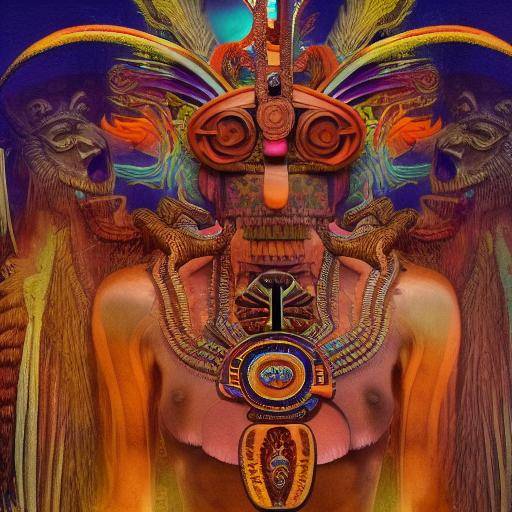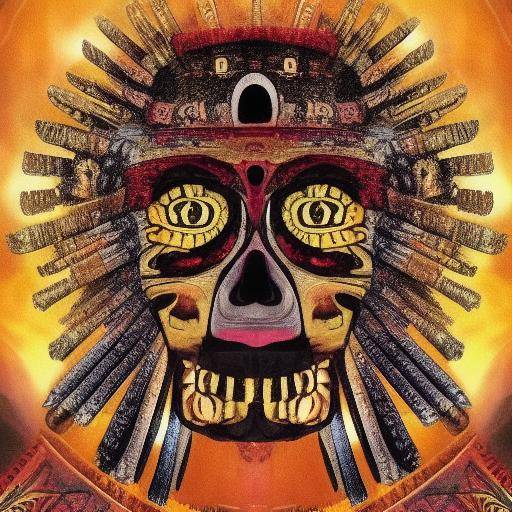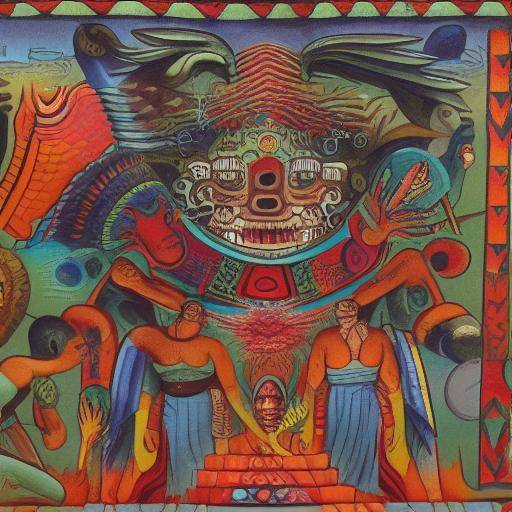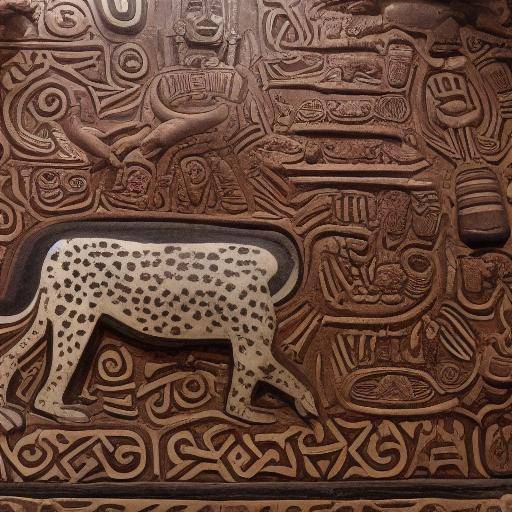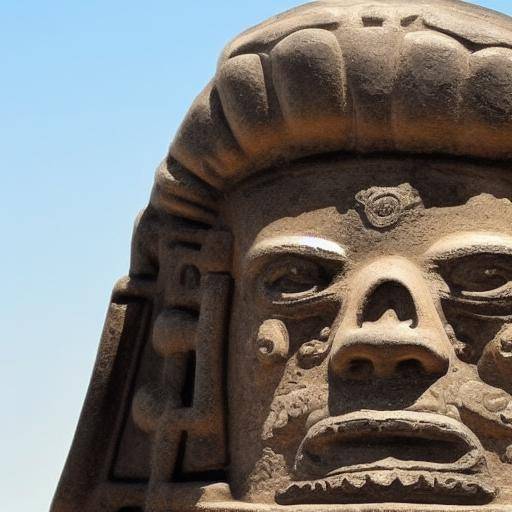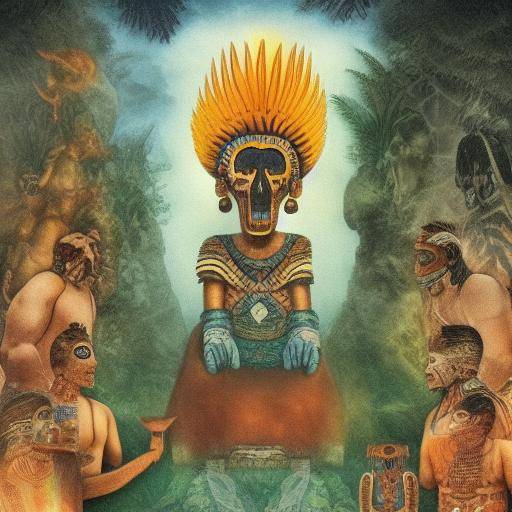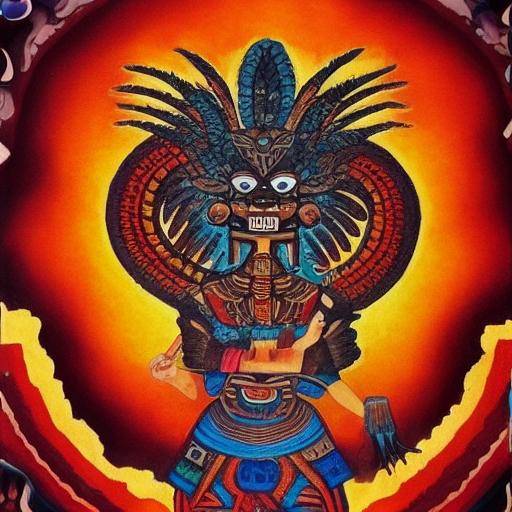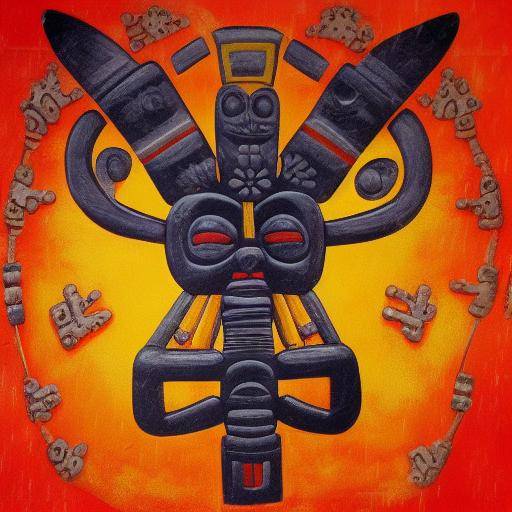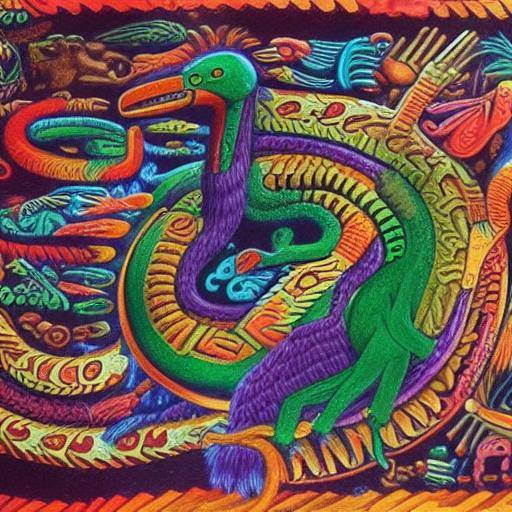
Introduction
Aztec mythology is rich in symbols and deities, and among them, Quetzalcóatl, the feathered snake, occupies a place of special importance. Representing one of the most outstanding figures of this vast set of beliefs, Quetzalcóatl symbolizes crucial aspects of the Aztec cosmovision. In this article, we will explore the exciting history, meaning and depth of Quetzalcóatl in Aztec mythology. We will address its origins, evolution and influence in Aztec culture, providing an integral vision of its historical and cultural relevance.
History and Background
Within Aztec mythology, Quetzalcóatl is a figure that cannot be overlooked. This deity, whose name means "sprayed serpent", was one of the most venerated among the Aztecs. Its influence ranged from the creation of the world to the art, religion and the worldview of this ancient civilization.
Origins and Evolution
Quetzalcóatl was not exclusively linked to the Aztecs; his cult dates back to earlier civilizations in Mesoamerica. Toltecs, for example, attributed different but equally significant roles to it, related to creation and knowledge. With the arrival of the Aztecs, the figure of Quetzalcóatl merged with other deities, which increased its importance.
The myth of Quetzalcóatl as a civilizing and benevolent deity, along with its connections to the wind, knowledge and fertility, was deeply rooted in Aztec culture, influencing its art, architecture and religious practices. During the rise of the Aztec empire, the figure of Quetzalcóatl experienced political, religious and symbolic transformations, demonstrating its vital importance in Aztec thought.
Quetzalcóatl and its Duality
Quetzalcoatl is a multifaceted deity. It was not only the protector of the artisans, but also a deity associated with duality, change and renewal. Its representation as a feathered serpent symbolizes the connection between the earthly world and the spiritual, providing a singular depth to its meaning in the Aztec mythology.
Mythology and Symbolism
Quetzalcóatl as Civilizing God
Quetzalcóatl was considered a civilizing god who taught mankind the art of agriculture, metallurgy and medicine. He also introduced the concepts of calendar and writing, helping to structure Aztec society and culture.
The Creation of the World
In Aztec cosmogony, Quetzalcóatl played a crucial role in the creation of the world. Along with his brother Tezcatlipoca, he destroyed the Cipactli monster, whose remains became the earth. Quetzalcóatl was also responsible for creating current human beings, moulding them from old bones and their own blood.
The Employed Serpent
The image of Quetzalcóatl as a feathered serpent symbolizes the union of the earthly and the heavenly. The feathers represent heaven, freedom and divinity, while the serpent represents earth and nature. This duality reflects the complexity of deity and its ability to move between different realms of the universe.
Influence in Aztec Culture
Art and Architecture
The influence of Quetzalcóatl can be seen in Aztec art and architecture. Temples, sculptures and codices frequently represented the feathered serpent, showing its importance in religious and cultural life. The Quetzalcóatl Temple in Teotihuacán is one of the most impressive examples of this devotion.
Ritual and Sacrifice
Quetzalcóatl also influenced rituals and sacrifices. Although he is known to be a god who did not promote human sacrifice, his festivities included rituals of blood and symbolic sacrifices to ensure fertility and prosperity.
Quetzalcóatl Festival
Every year the Aztecs celebrated festivals in honor of Quetzalcóatl. These festivals included dances, songs and offerings to honor God and ask for his favor for the harvests and the general prosperity of the community.
Modern Relevance
Although the Aztec empire has disappeared, the legacy of Quetzalcóatl persists in modern culture. This deity remains an important figure in the study of mythology and Mesoamerican history, and its image has been adopted in contemporary art, literature and popular culture.
Quetzalcóatl in Popular Culture
The figure of Quetzalcóatl has been represented in various forms in popular culture, from novels and films to video games and works of art. His image as a symbol of knowledge and duality continues to capture the imagination of people around the world.
Academic studies
Quetzalcóatl studies continue to provide valuable information on Aztec mythology and culture. Researchers in fields such as anthropology, archaeology and history continue to explore the impact of this deity on Mesoamerican civilization and its lasting legacy.
Conclusion
Quetzalcóatl, the feathered serpent, occupies a central place in Aztec mythology, symbolizing the union of the earthly and the heavenly, knowledge and civilization. Through its rich history and symbolism, Quetzalcóatl remains an emblematic figure that embodies the depth and complexity of Aztec culture. In exploring its legacy, we gain a deeper understanding of the worldview of the Aztecs and the universal concepts that still echo in humanity.
This article has explored the fascinating history of Quetzalcóatl, the feathered serpent, revealing its importance in Aztec mythology and its lasting influence on culture and religion. From its origins to its modern relevance, Quetzalcóatl remains an emblematic figure that embodies the power and mystery of the ancient Mesoamerican.

